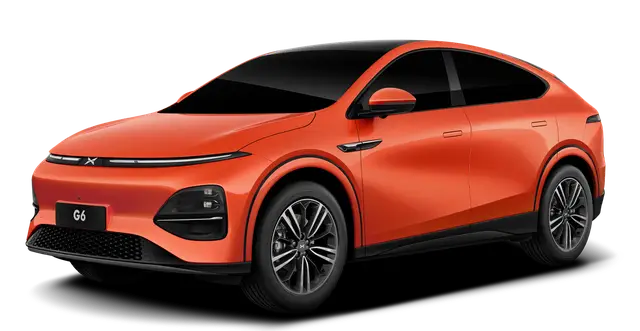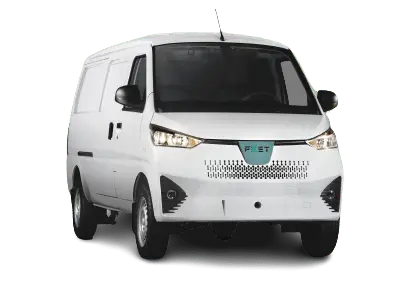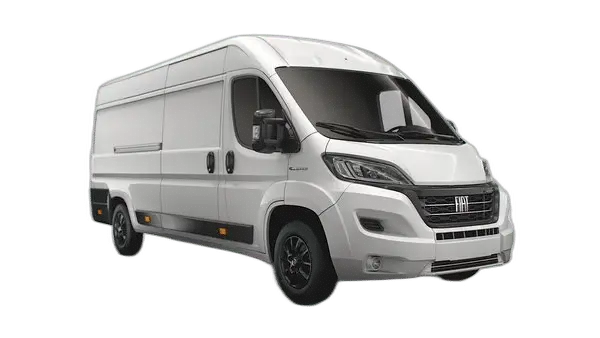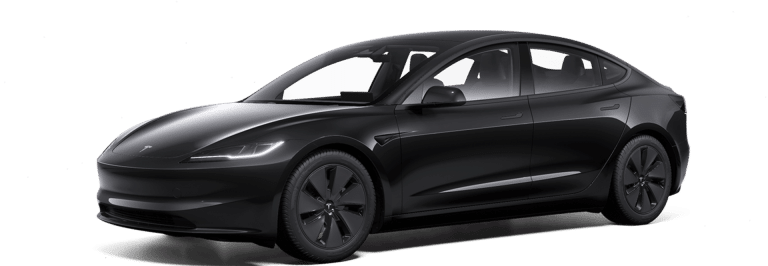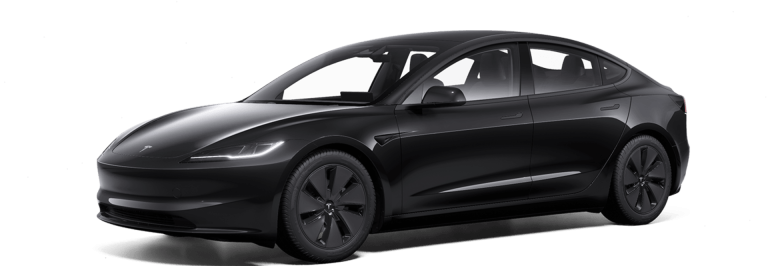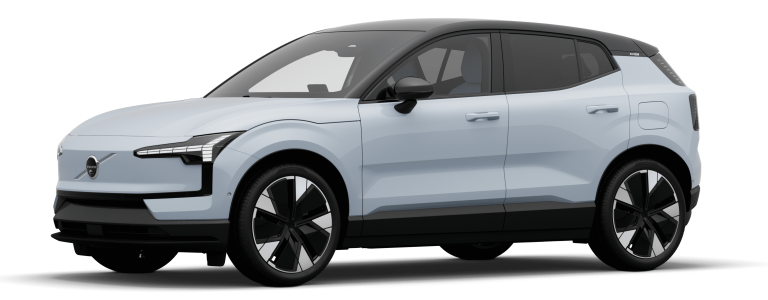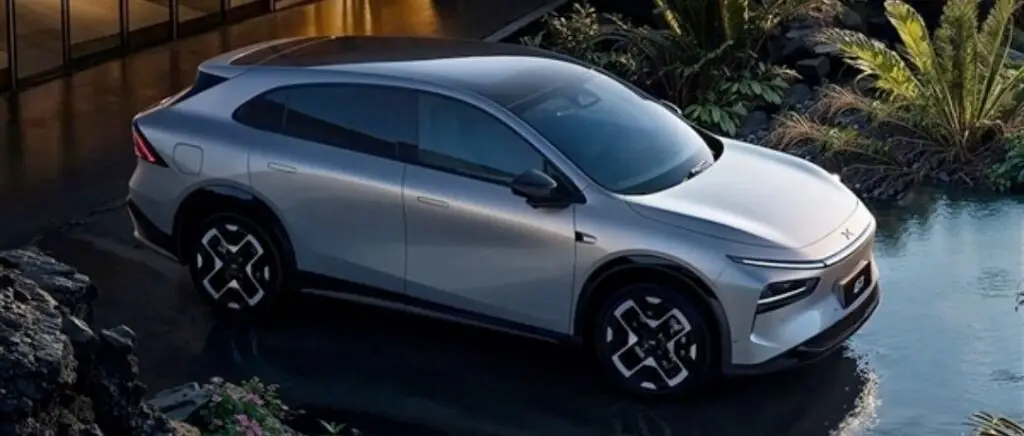CO2 emissions regulations
Since July 12, 2010, when the ENE (National Commitment to the Environment) law came into force, companies with more than 500 employees have been required to produce a carbon footprint or BEGES (Bilan d'Émissions de Gaz à Effet de Serre). This diagnosis is based on three perimeters:
- the scope 1 covers all greenhouse gases emitted directly by the company, such as heating and air conditioning.
- the scope 2 covers indirect emissions generated by production (manufacturing, machining and handling).
- the scope 3 focuses on indirect emissions linked to the company's activity, such as the purchase of raw materials and the transport of goods. Commuting to and from work falls into this category.. Their inclusion is mandatory as of January 2022.
These three scopes provide a precise, targeted assessment of the situation. Based on the results, companies can take appropriate corrective action.
The BEGES must be produced every four years and published on the dedicated Ademe (French Environment and Energy Management Agency) platform. Failure to comply can result in financial penalties of between €10,000 and €20,000 (in the event of a repeat offence).
The car: still the preferred means of transport for the French to get to work
The commute to and from work is an important lever for companies wishing to reduce their carbon footprint. carbon footprint. Despite the efforts already made to encourage the transition to green mobility, 70% of journeys between home and work are still made by car.
This behaviour is not confined to long-distance journeys, since 42% of employees whose workplace is less than a kilometer from home choose to get there by car!
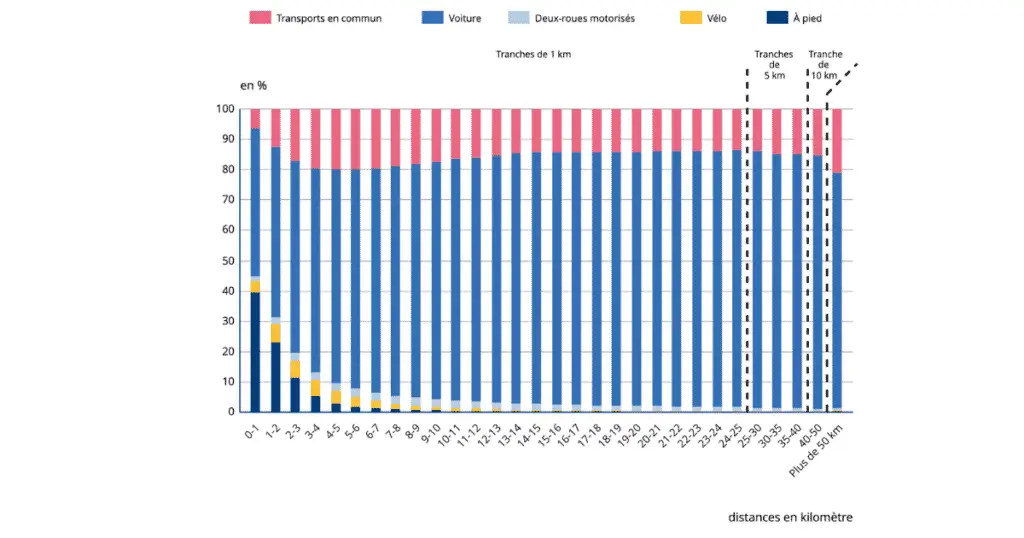
Source: Insee
When you consider that employees spend an average of 5 hours a week commuting, and that the car is the preferred mode of transport for journeys of less than 9 kilometers, it's easy to understand the need to take stock of mobility data.
Because the challenge is not just environmental: it's about rethinking these journeys in favor of soft mobility, geared towards employee comfort and reducing the intrinsic costs of travel.
Until December 31, 2022, discover several electric vehicle models available for delivery before Christmas!
Data at the heart of the plan to decarbonize commuting to and from work
To diagnose the third scope of a company'scarbon footprint, it is essential to collect and analyze information on employee travel and the modes of transport used.
The data taken into account to establish a diagnosis of carbon emissions enables us to draw up an analysis grid at both individual and collective levels. They include :
- the distance in km between the employee's home and the company's premises;
- the mode of transport used, taking into account characteristics such as vehicle engine, date of entry into service, type of fuel used and average consumption indices.
Putting itineraries and data relating to greenhouse gas emissions into perspective, according to the vehicle used, provides a precise diagnosis. This can be integrated into the overallcarbon footprint and become a basis for defining short- and medium-term areas for improvement.
The main difficulty lies in choosing a calculation method that will generate rapid results for companies with over 500 employees, as data collection and processing are particularly time-consuming.
How do you calculate the carbon footprint of a journey?
The Bilan Carbone® method published by Ademe in 2004 quantifies GHG emissions according to objective criteria, such as means of transport and emission factors, in relation to the number of kilometers traveled per day and the number of days worked.
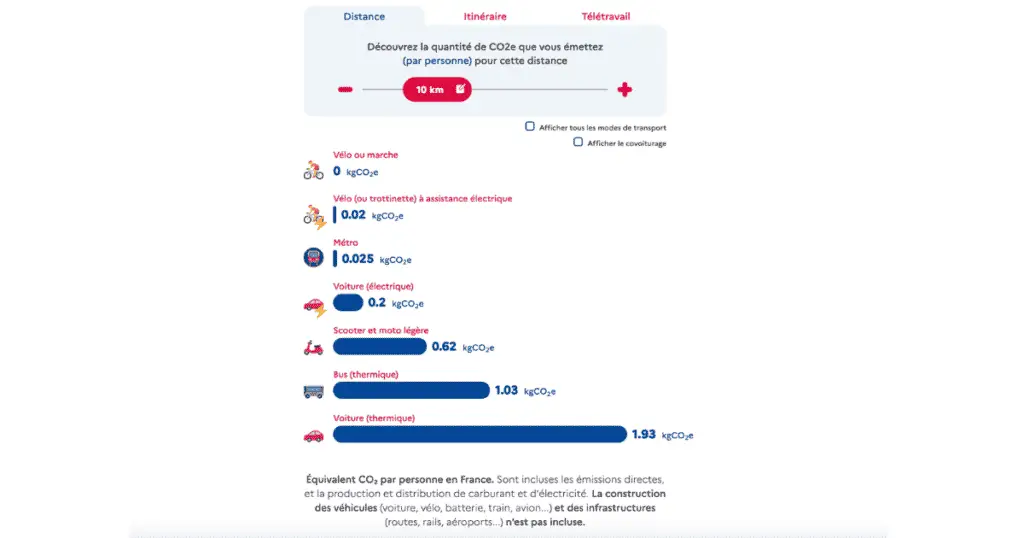
Source : Avenir Climatique
RGPD (General Data Protection Regulation) and route calculation
As we noted above, it is not possible to draw up a carbon footprint for home-to-work journeys without information on employee travel. The question is how to collect this information, even though the French Labor Code specifies that such journeys do not fall within the scope of actual working time. In other words, the employer has no right to monitor the means used by his employees to get to his company's premises.
This provision has been reinforced by the RGPD (General Data Protection Regulation) in force since May 25, 2018, this European directive on the protection and confidentiality of personal data obliges companies to exercise the utmost caution when collecting and using their employees' data.
However, geolocation systems are an integral part of the scope of personal information, even when they are installed in company vehicles. While activities carried out during working hours (transporting goods, sales staff movements or deliveries) may give rise to employer surveillance (in compliance with the conditions laid down by the CNIL), the same cannot be said of journeys between home and the office, which fall within the scope of private life.
On the other hand, employees have a right of access to information collected by navigation and geolocation systems. RGPD guidelines specify that employees must be informed of the existence of this device and object to its installation if it does not comply with regulations.
Measures to increase data security and prevent disclosure must be implemented by the employer.
Lastly, information from geolocation systems must not be kept for longer than a certain period, ranging from two months to five years, depending on the purpose for which it is to be used (e.g. to track interventions or working hours).
The impossibility of obtaining information from geolocation to estimate thecarbon footprint of commuting demonstrates just how important it is to involve employees in this process. The carbon footprint of a company's indirect emissions is thus closely linked to the declarations of its employees, who are willing to share information about their mobility habits, which means revealing the time they leave home, the route they take and the technical characteristics of their vehicle.
Solutions to reduce the carbon footprint of home-office journeys
The transition to green mobility cannot be made without the help of your employees. According to a survey carried out by IFOP, 82% say they are ready to leave their car in the garage and use another means of transportsuch as cycling, public transport or carpooling.
Nevertheless, the company must be at the heart of this approach and offer a number of support options, such as adjusting employees' schedules to suit transport needs, providing financial assistance for mobility, installing charging stations charging stations or updating a car-sharing schedule.
Against this backdrop, the sustainable mobility package, which is designed to support employee travel in both the private and public sectors, is a real opportunity.
Launched in 2018 as part of the LOM law (Loi d'Orientation des Mobilités), it enables companies with more than 100 employees to deploy a mobility plan with a view to improving the energy transition and optimizing their overall CSR policy.
The means used are varied: financing part of the cost of transport through mobility vouchers, subscriptions to bike-sharing services, partial coverage of fuel costs for employees who carpool, installation of recharging stations for electric cars at the employee's home, etc.
How can you encourage and develop green mobility within your company?
Beyond the immediately perceptible benefits in terms of environmental impact, green mobility offers other advantages that can become the core of your sales pitch. Making it easier for your employees to get around can have positive effects on quality of life at work and performance.
Telecommuting to reduce the carbon footprint of home-office journeys
Propelled by the constraints of the Covid pandemic, telecommuting has become widely democratized in France, to the point of being instituted as a new practice in some organizations.
Partially preserved for a few days a week, it helps reduce GHG emissions. What's more, it is often combined with other strategies to reduce unnecessary travel, such as videoconferencing.
According to ADEME's assessment, the benefits of a day's telecommuting means a reduction from an average from an average of 9 km to 5.5 km travelled.
Gentle modes of transport for short journeys
Promoting the use of bicycles (electric or otherwise) for short distances not only helps to reduce traffic congestion, but also helps to limit air pollution. L'bicycle mileage allowance (IKV), paid as a lump sum by the company, can encourage employees to change their behavior. It amounts to 25 centimes per kilometer travelled. The IKV can be used to pay for the purchase and maintenance of a bicycle.
Adopt the electric car reflex
Organizations with a fleet of cars have every interest in offering electric company cars to reduce their carbon footprint, especially if these vehicles can be used personally by employees. This initiative is reinforced by other measures, such as the partial payment of electricity costs by the employer and the provision of a charging station charging station.
Develop carpooling
Carpooling is a means of transport that has developed considerably over the last few decades, spurred on by platforms that put drivers and users in touch with each other. L'ompany car-sharing offers similar advantages in terms of reducing GHG emissions and costs. Some tools, such as Klaxitcan help can help you set up a car-sharing travel plan with intuitive applications and fleet management software.
Commuting to and from work raises major issues for corporate social responsibility, particularly when it comes to short-distance use.
At a time when environmental issues can no longer be ignored, organizations need to promote sustainable mobility by encouraging new behaviors aimed at reducing their ecological footprint.
While monitoring journeys finds its limits in the requirements of the RGPD, there are other alternatives for raising employee awareness and initiating a successful conversion to greener modes of transport.


